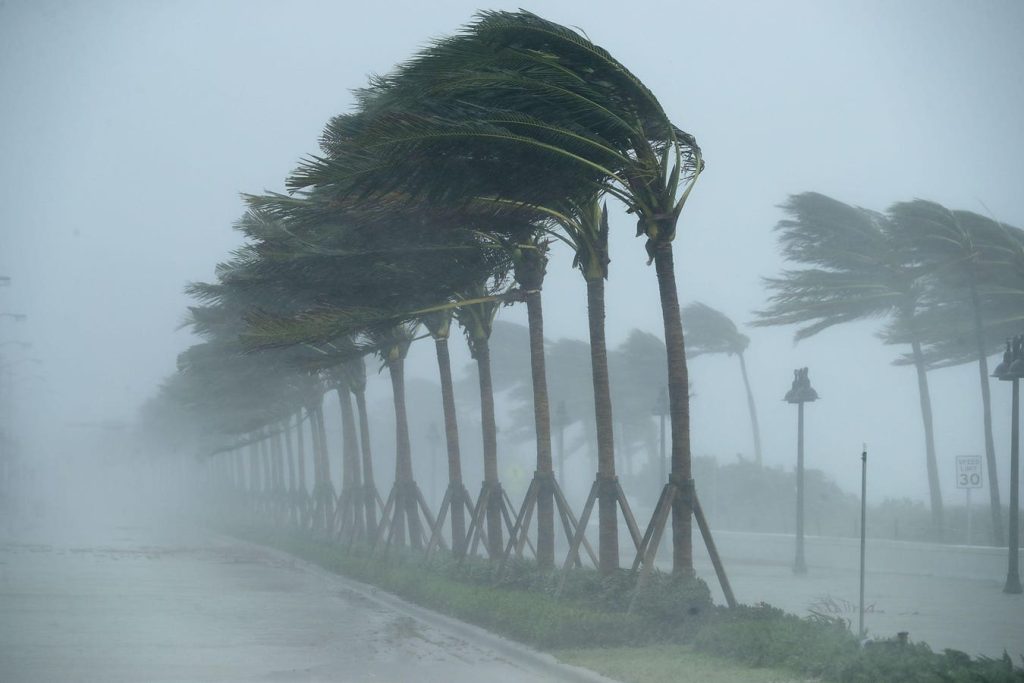Historically warm average temperatures are significantly changing the weather, contributing to drought, wildfire, and flooding. Yet it is becoming increasingly common to attribute, at least in part, every weather-related disaster or anomaly to climate change.
Atlantic hurricanes are a case in point. We saw records shattered in 2020, but are we seeing an ominous upward historical trend in the hazard posed by major Atlantic hurricanes? No. And a search for answers about climate and hurricane connections reveals little or no evidence that major landfalling hurricanes in the Eastern United States have increased in frequency since data collection started around 1850.
It’s extremely important to be clear about climate risk. The greater certainty that can be provided, the easier it will be to prioritize and motivate the changes needed to increase societal resilience amid genuine, and increasingly severe, changes in the climate.
What we know about hurricanes
Although there’s no evidence we’re seeing more major hurricanes than 170 years ago, it’s very clear that property damage in terms of dollars continues to rise. In fact, nine of the top 10 U.S. hurricanes by cost occurred in this century (despite adjustment for inflation, see table). This trend of increasing financial impact is driven by continued development of higher-valued property along the coasts putting more value at risk of damage from wind and water. Flooding is clearly increasing due to hardening of the terrain (e.g., building and paving), which prevents water infiltration; the combination of subsiding (slowly sinking) land and rising sea levels that increase storm surge; and increasing rainfall rates from storms with warmer air.
Under these circumstances, any given hurricane could cause more damage than it would have in the past.
Thankfully, Atlantic hurricanes, especially major ones making landfall and affecting property and operations on the North American continent, are infrequent. The average number of recent total Atlantic hurricanes (including small ones that form and fade away over water) is fewer than 10 per year. Both landfalling hurricanes (of any severity) and major hurricanes (i.e., category 3 or higher) are occurring on average fewer than three times a year. Given the infrequency, understanding any changes in occurrence or severity caused by a changing climate requires an extensive historical record.
Several factors potentially affect hurricane records, including:
Naming: Over time, more storms (including hurricanes, tropical storms and subtropical storms) have been given human names, making them more memorable than when they were identified by their locations or dates.
In 1953, the United States began using female names for storms and, by 1978, both male and female names were used to identify Northern Pacific storms. This scheme was then adopted in 1979 for storms in the Atlantic basin.
Memorable human names arguably leave the impression that there are more noteworthy events even if the number has stayed the same.
Observation: The tools to detect hurricanes have significantly improved over the past century, meaning a more recent storm is more likely to be counted than one in the distant past. Aircraft reconnaissance began in the mid-1940s and weather satellites arrived 20 years later, significantly improving detection.
The first observational satellites were launched in the 1960s. By 1966, the ESSA (Earth Science Services Administration) polar-orbiting satellites provided one low-resolution visual image of the Atlantic per day. The ATS (Applications Technology) was the first geostationary satellite series to provide constant monitoring of the same region.
In 1972, imagery from the ATS and ESSA series of satellites, combined with an analysis method called the Dvorak technique, resulted in the ability to perform daylight observations of hurricanes and reliably estimate their intensity. Hence, the ability to detect storms anywhere in the Atlantic is just over 50 years old, challenging the ability to determine the long-term trends associated with a somewhat rarely occurring event.
Making Landfall: The most accurate (and relevant) hurricane records are for those that have made landfall. As opposed to hurricanes that form and dissipate in the open ocean, landfalling North American hurricanes have generally made noticeable impact on the East Coast, which has been fairly well-populated for the last 150 years. Storms that remained in the ocean are more difficult to decipher from older historical records. Although storms in the open ocean affect shipping and air transport, the greatest impact is from landfalling storms.
Better (Re)Analysis: To address shortcomings in historical observation capabilities, scientists developed a process called reanalysis whereby historical records (including old newspaper clippings, shipping logs and coastal weather information) are used to infer the number and severity of storms. The reanalysis process allows the record of storms to be traced back to 1851 as shown (as revised numbers) in the figure below for landfalling US hurricanes.
Reanalysis is imperfect. There is some bias (generally an undercounting of storms), but the reanalysis process provides a notable improvement in the available data. There are clearly storms that are still not counted in the reanalysis simply due to a lack of any archival record; hence, the actual numbers are likely higher. There are cases in the 1950s and 1960s, however, where the reanalysis reduced the number of storms, presumably due to oversampling or double-counting a storm that hit the shore more than once. A recent example of a storm making landfall more than once is Ian in 2022, which struck Florida, returned to the Atlantic, and then made a second landfall in South Carolina.
Although this examination turns up little or no evidence to suggest landfalling hurricanes are increasing in frequency, there is some potential for increases in severity. There’s no question that warmer waters can fuel tropical cyclones, but warming air, and other atmospheric factors can counterbalance the effect of warmer seas. Volatility depends on the contrast in the two temperatures and the overall development of flows and pressure systems in the atmosphere. Late-season conditions (warm seas, cooler air) can be especially conducive to greater severity.
The best global body of knowledge on climate comes from the Intergovernmental Panel on Climate Change (IPCC), which says nothing definitive about global frequency and severity trends.
The most intense tropical cyclones are clearly the most relevant. One-third of the total number of landfalling hurricanes have produced approximately 80% of the damage up to 2017.1 Hurricanes with intensity above category 3 (defined by 1-minute averaged wind speeds over 111 MPH 33 feet above ground) are classified as ‘major’ events and are shown below for original (i.e., prior to use of reanalysis) and revised (yielded by reanalysis) events. Note the relatively recent period of complete coverage from satellite observation.
Multidecadal variations (peaks or valleys in either direction) can be seen from 1) 1947-1967, 2) 1967-1995, and 3) 1995- 2022. There is no clear scientific explanation for these extended periods where major storm frequencies follow similar trends. Factors such as El Niño and La Niña patterns, (which affect the relevant water temperatures in the Pacific and Atlantic as well as west-to-east winds near the equator,) are influencing but not determining factors.
So, what does all this mean?
The bottom line is there is no compelling evidence that major landfalling Atlantic hurricanes are increasing in frequency or severity (as currently measured based on wind speed) due to climate change. There is some recent evidence that storms may be intensifying (i.e., increasing in severity) faster and traveling slower, which are subjects of active research.
Hurricanes are a persistent risk, lesser or greater depending on your location. There is no evidence to date that shows the world in a changing climate is producing, or will produce, a notable increase in the occurrence of landfalling storms in the Atlantic. So as always, prepare for them by securing facilities and making other well-established preparations (i.e., emergency response planning) for the strongest winds you can expect to encounter using current assessments of this hazard.
What is increasing, however, is the importance of protecting against hurricane-related flooding, both from increased rainfall due to warmer air, and the potential for greater levels of storm surge.
Climate science is complicated, but clarity is important for businesses protecting their livelihoods especially those businesses which have dealt with hurricanes in the past with more than plenty lessons learned. Thankfully, those lessons and knowledge can, and must, be put in place now with the backdrop of a hazard that doesn’t need to be exaggerated for action to be taken.
[1] Weinkle, J, et al. Normalized hurricane damage in the continental United States, 1900-2017, Nat. Sustain. 1, 808-813 (2018)
Read the full article here










